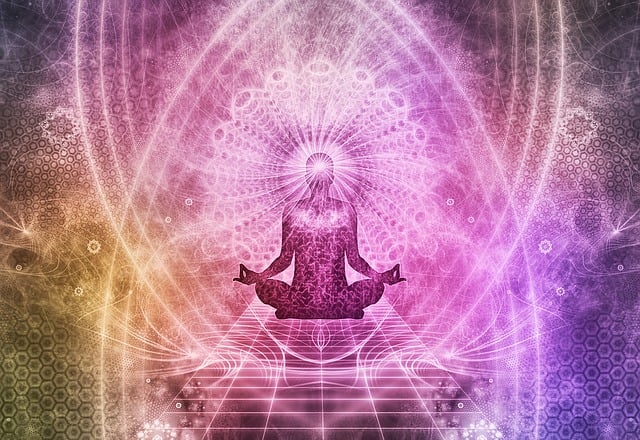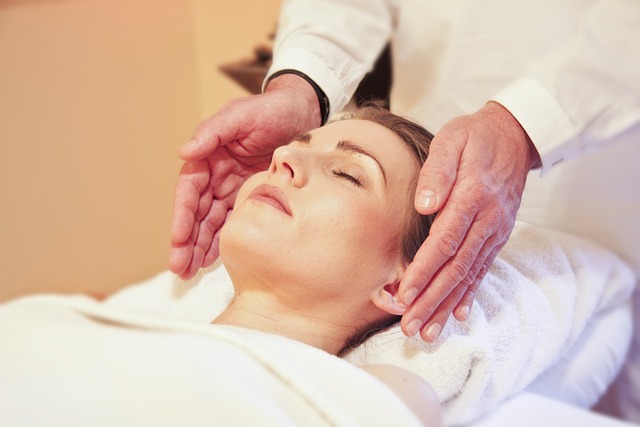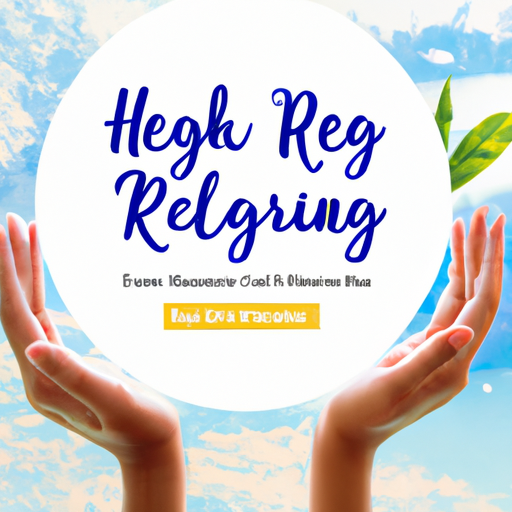
Have you ever wondered if Reiki healing can be used for self-healing? Well, in this article, we’re going to dive into the topic and explore whether Reiki can be a powerful tool for healing yourself. Reiki is a form of energy healing that originated in Japan and is based on the concept of channeling universal life energy to promote physical, emotional, and spiritual well-being. It is often performed by a trained Reiki practitioner, but the question remains – can you use Reiki to heal yourself?
The answer is yes! Reiki can definitely be used for self-healing. The practice involves using your hands to direct and transmit healing energy to yourself, allowing you to balance your energy, release blockages, and promote healing on various levels. By learning Reiki techniques and attuning yourself to the universal life force energy, you can access this healing power anytime and anywhere. In fact, many people find that practicing Reiki on themselves regularly not only helps with physical ailments but also reduces stress, anxiety, and improves overall well-being. So, if you’re interested in learning more about how to use Reiki for self-healing, keep reading because we’re going to delve deeper into this fascinating topic in the rest of the article.
What is Reiki Healing?
Understanding the concept of Reiki
Reiki is a form of energy healing that originated in Japan in the late 19th century. The word “Reiki” is derived from two Japanese words – “rei” meaning universal or spiritual, and “ki” meaning life force energy. Reiki practitioners believe that this life force energy flows through every living being, and when it is low or blocked, it can lead to physical, emotional, and mental imbalances.
Reiki healing aims to restore the balance of this life force energy within the body, promoting overall well-being and facilitating the body’s natural healing process. It is based on the belief that the practitioner can channel this universal energy through their hands by placing them lightly on or near the recipient’s body. This energy is believed to flow to where it is needed most, promoting healing and relaxation.
Origin and history of Reiki
Reiki was developed by Mikao Usui, a Japanese Buddhist monk, in the early 20th century. Usui underwent a spiritual awakening after a period of fasting and meditation on Mount Kurama, and it is believed that he received the knowledge and ability to heal using this universal life force energy. He spent the rest of his life teaching, practicing, and spreading the teachings of Reiki.
Over time, Reiki spread from Japan to the Western world, where it was embraced for its gentle and non-invasive approach to healing. Today, Reiki is practiced all over the world and is recognized as a complementary therapy that can be used in conjunction with traditional medical treatments.
The Benefits of Reiki Healing
Physical Benefits of Reiki
Reiki healing has been reported to have a wide range of physical benefits. Through its relaxation and stress reduction effects, Reiki can help to alleviate physical tension and pain. It can also enhance the body’s natural healing processes, making it beneficial for injuries, surgeries, and chronic conditions.
Additionally, Reiki can promote better sleep and improve overall energy levels. It is believed to boost the immune system, helping the body to fight off illness and maintain optimal health.
Emotional Benefits of Reiki
Reiki is known to have profound emotional benefits. The deep relaxation and sense of peace that accompany a Reiki session can help to reduce anxiety, depression, and feelings of overwhelm. It can also increase feelings of self-love, self-acceptance, and inner calm.
Reiki can be particularly helpful for those dealing with emotional trauma or unresolved emotions. By gently releasing emotional blockages and restoring balance to the energy centers of the body, Reiki can promote emotional healing and provide a safe space for emotional expression.
Mental Benefits of Reiki
In addition to its physical and emotional benefits, Reiki also has positive effects on mental well-being. By promoting deep relaxation and reducing stress, Reiki can help to clear the mind, improve focus and concentration, and enhance mental clarity. It can also help to alleviate symptoms of mental fatigue and burnout, allowing for a sense of mental rejuvenation.
Reiki is often used as a tool for managing stress, anxiety, and other mental health conditions. It can provide a sense of grounding and stability, helping individuals to cope with the challenges of daily life more effectively.

Reiki for Self-healing
Reiki as a self-healing practice
While Reiki is often performed by a trained practitioner, it can also be used as a powerful tool for self-healing. Reiki self-healing involves using the hands to channel healing energy to oneself. This practice allows individuals to take an active role in their healing journey and cultivate a deeper connection with their own energy.
How Reiki promotes self-healing
Reiki self-healing works by rebalancing the energy centers, or chakras, within the body. Chakras are believed to be spinning wheels of energy that correspond to different physical, emotional, and spiritual aspects of our being. When these chakras are blocked or unbalanced, it can manifest as physical or emotional symptoms.
By channeling Reiki energy to specific chakras or areas of the body, individuals can help to clear and rebalance these energy centers. This allows the life force energy to flow freely, promoting overall well-being and facilitating self-healing.
The Process of Reiki Self-healing
Preparing for a Reiki self-healing session
Before starting a Reiki self-healing session, it is important to create a calm and comfortable environment. Find a quiet space where you won’t be disturbed, and ensure that you are in a relaxed and receptive state of mind. You may choose to play soothing music, light candles, or use essential oils to enhance the atmosphere.
Setting intentions for self-healing
Setting intentions is an important part of the self-healing process. Take a few moments to reflect on what you would like to address or heal during the session. This could be a specific physical ailment, an emotional issue, or simply a desire for overall balance and well-being.
By setting clear intentions, you are directing the Reiki energy to specific areas of your life that require healing and support.
Performing self-healing hand positions
During a Reiki self-healing session, you will use hand positions to channel the healing energy to different parts of your body. Begin by placing your hands on your head, covering your eyes and the back of your head, and allow the energy to flow. Slowly move your hands to other areas of your body, such as the throat, heart, and stomach, spending a few minutes on each position.
You can also place your hands directly on areas of pain or discomfort, allowing the energy to flow directly to those areas. Trust your intuition and let your hands guide you as you move through the different hand positions.

Chakras and Reiki Self-healing
Understanding the chakra system
The chakra system is a key component of Reiki self-healing. There are seven main chakras located along the spine, each corresponding to different aspects of our physical, emotional, and energetic well-being. These chakras are like energy centers that spin and vibrate at different frequencies.
Understanding the chakra system can help you identify areas of imbalance or blockages within your energy field and target those areas during your self-healing practice.
Balancing and healing chakras with Reiki
Reiki can be used to balance and heal the chakras by channeling healing energy to specific areas of the body. By placing your hands on or near the corresponding chakra, you can help to clear and restore the energy flow, promoting harmony and vitality.
For example, if you are experiencing throat issues or difficulty expressing yourself, you can focus on the throat chakra during your self-healing session. By placing your hands lightly on your throat and channeling Reiki energy, you can help to release any blockages and restore balance to this area.
Corresponding chakras for self-healing
Here is a brief overview of the corresponding chakras and their associated areas for self-healing:
- Root Chakra (Base of the spine): Focuses on grounding, stability, and physical vitality.
- Sacral Chakra (Lower abdomen): Relates to emotions, creativity, and sensuality.
- Solar Plexus Chakra (Upper abdomen): Governs personal power, confidence, and self-worth.
- Heart Chakra (Center of the chest): Pertains to love, compassion, and emotional healing.
- Throat Chakra (Throat area): Associated with communication, self-expression, and truth.
- Third Eye Chakra (Middle of the forehead): Concerned with intuition, clarity, and spiritual awareness.
- Crown Chakra (Top of the head): Connects to higher consciousness, divine wisdom, and spiritual connection.
Using Reiki Symbols for Self-healing
Exploring the power of Reiki symbols
Reiki symbols are sacred symbols that are used to enhance the healing energy and intention during a Reiki session. These symbols have specific meanings and can be activated or drawn on the body to increase the healing power.
Symbols such as the Cho Ku Rei (power symbol), Sei Hei Ki (mental/emotional symbol), and Hon Sha Ze Sho Nen (distance symbol) can be used in self-healing to amplify the healing energy and focus.
Activating symbols for self-healing
To activate a Reiki symbol during self-healing, you can visualize it in your mind’s eye or draw it in the air with your finger. You can also draw the symbol on a piece of paper and place it near you as a reminder of its energy.
Take a few moments to connect with the symbol and its energy, allowing it to infuse your self-healing practice with its specific qualities. Whether you choose to activate one symbol or several, trust that they will enhance your self-healing journey.

Self-Healing Techniques in Reiki
Reiki meditation for self-healing
Meditation is a powerful self-healing tool that can be combined with Reiki to deepen your practice. Find a comfortable position and focus on your breath, allowing your body and mind to relax. As you inhale, imagine breathing in healing energy. As you exhale, visualize any tension or negativity leaving your body.
You can also incorporate Reiki symbols into your meditation practice, visualizing them or drawing them in the air as you breathe. This combination of Reiki and meditation can help to calm the mind, balance the energy, and promote overall well-being.
Reiki visualization for self-healing
Visualization is another effective technique for self-healing with Reiki. Close your eyes and imagine yourself surrounded by a beautiful healing light. Visualize this light flowing through your body, clearing away any blockages or imbalances and restoring harmony.
You can also visualize specific areas of your body or aspects of your life that require healing and imagine them being bathed in healing energy. Trust your intuition and allow your visualization practice to guide you in your self-healing journey.
Reiki affirmations for self-healing
Affirmations are positive statements that can support and empower your self-healing process. Choose affirmations that resonate with you and reflect your intentions for healing. Examples of Reiki affirmations include:
- “I am filled with healing energy.”
- “I release all that no longer serves me.”
- “I am worthy of love and healing.”
- “I trust in the wisdom of my body to heal itself.”
- “I am a channel for divine healing energy.”
Repeat these affirmations during your self-healing practice, either silently or out loud. Allow the positive energy of the affirmations to shift your mindset and support your healing journey.
Combining Reiki with Other Self-healing Practices
Reiki and meditation
Combining Reiki with meditation can deepen your self-healing practice and promote a sense of inner peace and well-being. As you meditate, you can invite the healing energy of Reiki to flow through your body, clearing and balancing the energy centers.
Utilizing Reiki symbols in your meditation practice can amplify the healing energy and deepen your connection to the universal life force energy.
Reiki and mindfulness
Mindfulness is the practice of being fully present in the moment, observing your thoughts, feelings, and sensations without judgment. When combined with Reiki, mindfulness can enhance your self-healing practice by allowing you to fully experience the healing energy as it flows through your body.
As you practice Reiki self-healing, remain mindful of the sensations, emotions, and thoughts that arise. Embrace them with compassion and allow the healing energy to nourish and support you.
Reiki and journaling
Journaling is a powerful self-reflection tool that can be used in conjunction with Reiki self-healing. After a Reiki session, take some time to write down any insights, emotions, or physical sensations that arose during the session.
You can also use journaling to set intentions for your self-healing practice and track your progress over time. By combining Reiki and journaling, you can gain deeper clarity and understanding of yourself and your healing journey.

Reiki Self-care Practices
Maintaining a regular Reiki self-care routine
To reap the full benefits of Reiki self-healing, it is important to maintain a regular self-care routine. Set aside dedicated time each day or week to practice self-healing with Reiki. This consistent practice will help to cultivate a deeper connection with your energy and promote ongoing healing and well-being.
Incorporating Reiki into daily life
Reiki self-healing doesn’t have to be confined to a specific time or place. You can incorporate Reiki into your daily life by simply placing your hands on your body and channeling healing energy whenever you feel the need for a boost of energy or relaxation.
Whether it’s during a stressful moment at work, before bedtime, or during a quiet moment of reflection, taking a few moments to activate the healing energy within you can help to restore balance and promote self-healing.
Self-care tips for Reiki practitioners
As a Reiki practitioner, it is important to prioritize self-care to maintain your own well-being. Some self-care tips for Reiki practitioners include:
- Regularly practicing self-healing with Reiki to recharge and balance your energy.
- Incorporating other self-care practices such as meditation, journaling, and mindfulness into your routine.
- Setting healthy boundaries with clients and taking breaks between sessions to recharge.
- Seeking support and guidance from other Reiki practitioners or teachers to continue learning and growing.
By prioritizing self-care, you can ensure that you are in the best state to support and facilitate healing for others.
Conclusion
In conclusion, Reiki healing can indeed be used for self-healing. By embracing Reiki as a self-healing practice, individuals can take an active role in their well-being and cultivate a deeper connection with their own energy. Reiki offers numerous benefits on physical, emotional, and mental levels, promoting relaxation, balance, and overall well-being.
Through self-healing techniques such as hand positions, chakra balancing, visualization, and the use of symbols, individuals can address specific areas for healing and promote harmony within their energy field. Combining Reiki with other self-healing practices such as meditation, mindfulness, and journaling can further enhance the healing experience.
By incorporating Reiki into daily life and maintaining a regular self-care routine, individuals can harness the power of Reiki for their own personal growth and well-being. Whether you are new to Reiki or an experienced practitioner, exploring the potential of Reiki self-healing can be a transformative journey towards wholeness and self-discovery.










